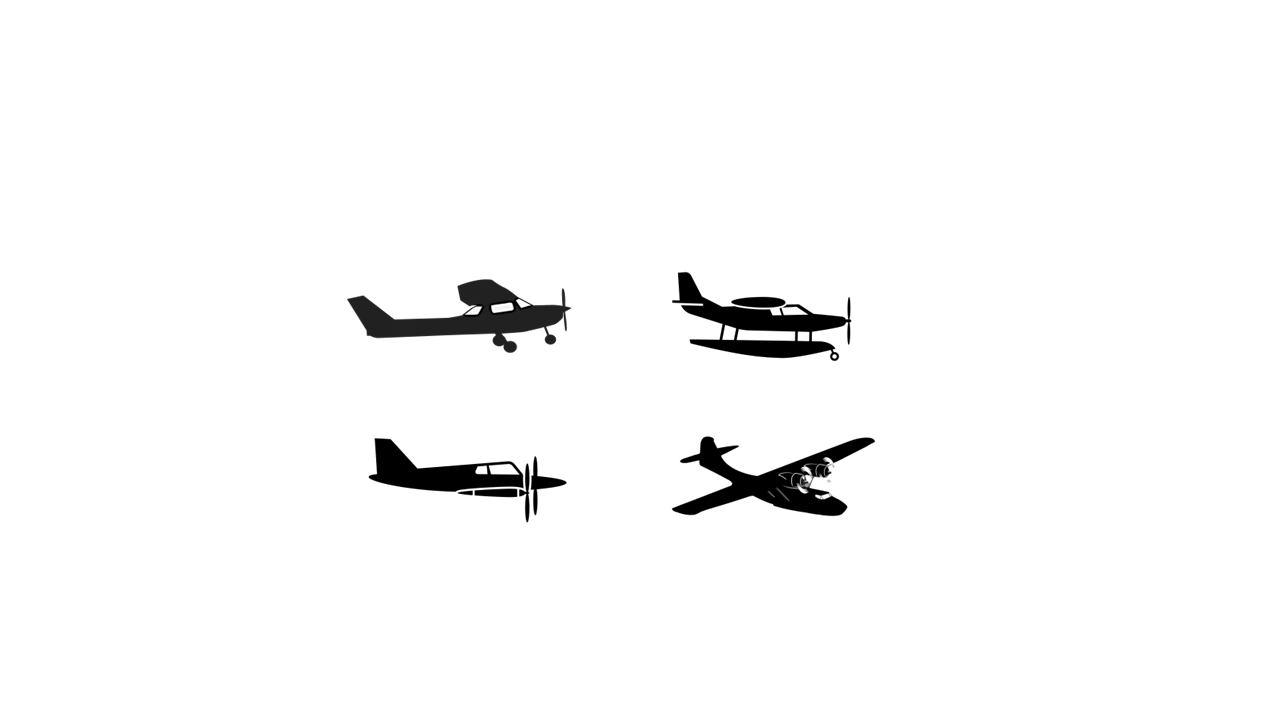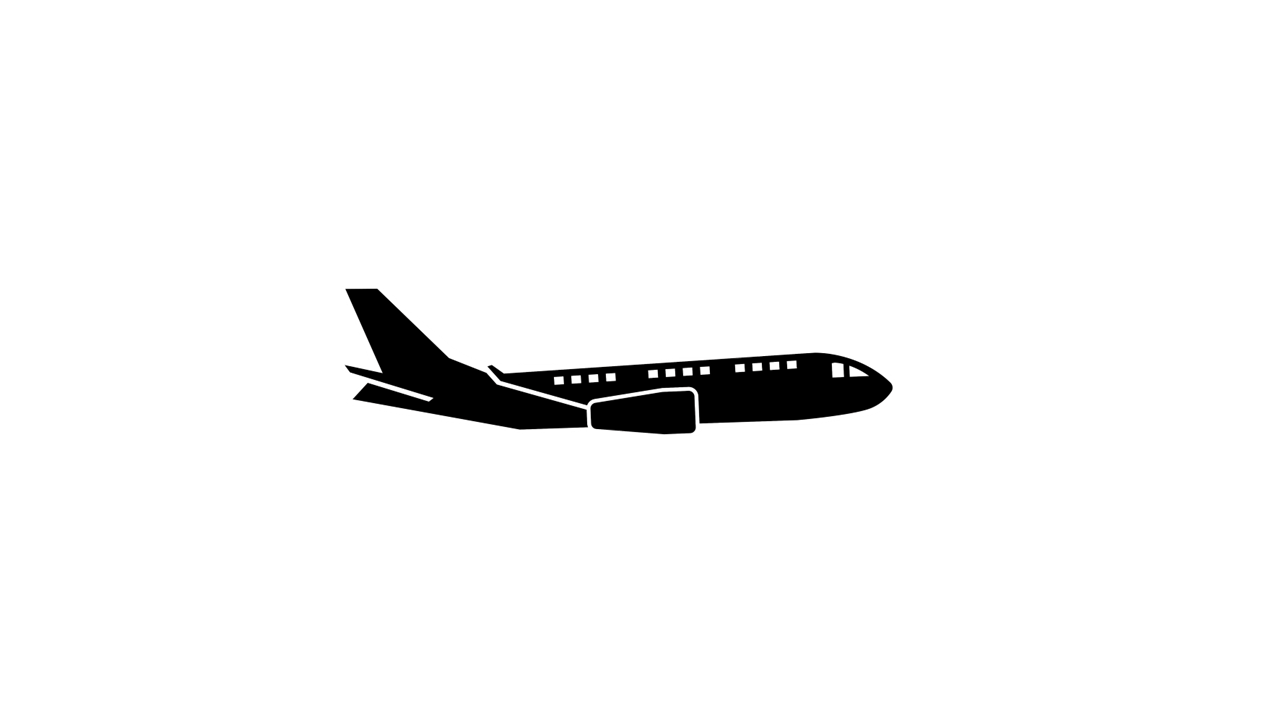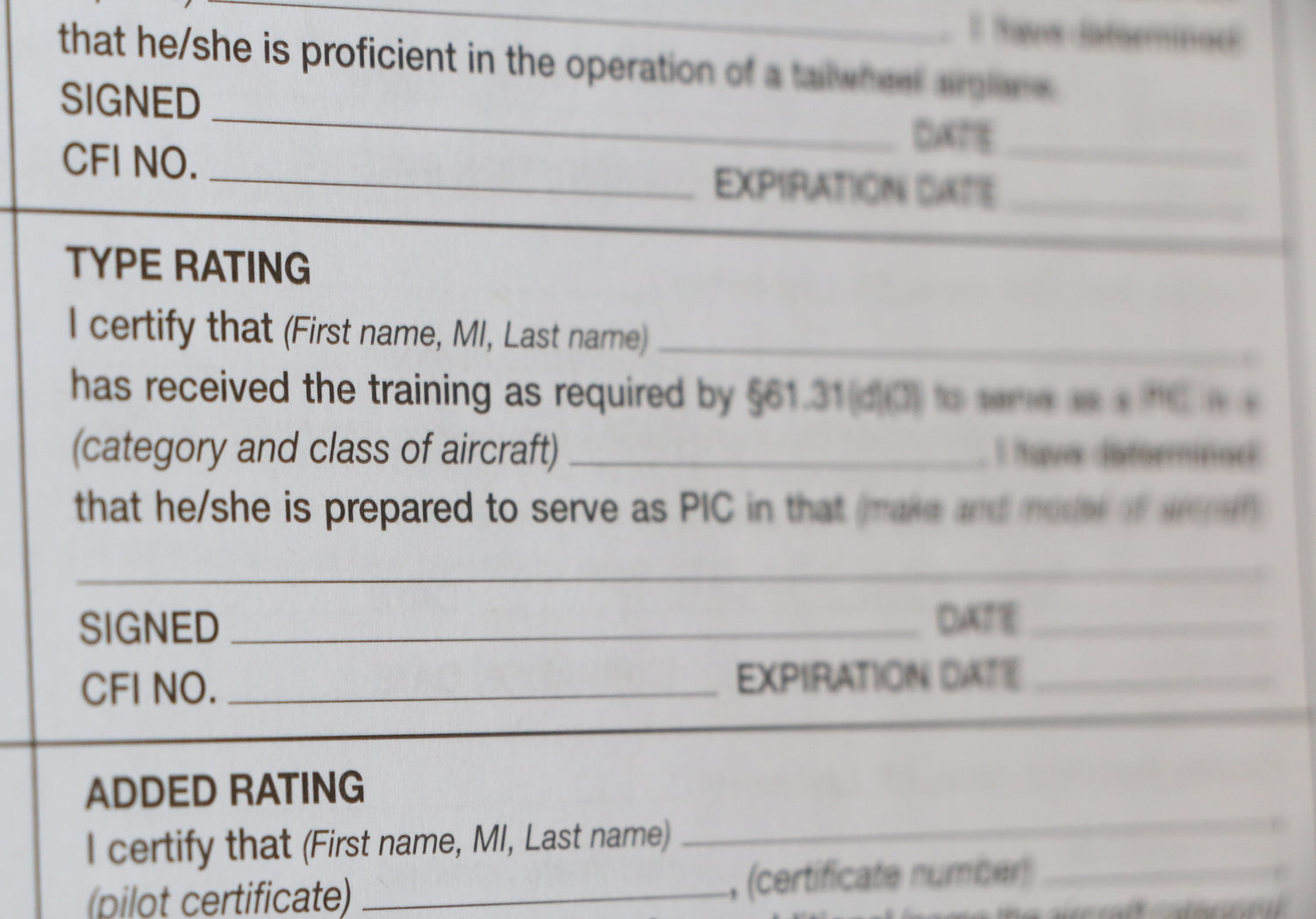Pilot Certificates & Ratings
There are many different certificates, ratings and endorsements available to pilots. BUT, before we discuss what these are, it’s important to make the distinction between the category, class and type of aircraft pilots can be certificated and rated for.

Categories of aircraft include:
- Airplane
- Rotorcraft
- Glider
- Lighter than Air
- And more!

Within each category of aircraft are classes of aircraft that have similar operating characteristics.
Classes of Airplane include:
- Single engine land (ASEL)
- Single engine sea (ASES)
- Multiengine land (AMEL)
- Multiengine sea (AMES)

Type of aircraft means a specific make and basic model of aircraft (ex. 737-700).
Now that we understand the differences between categories, classes and type of aircraft, we can begin to understand what types of Pilot Certificates exist, what it means to be rated, and what endorsements allow you to do.

There are several primary types of Pilot Certificates:
- Private Pilot – flying for personal use
- Commercial Pilot – flying for compensation (not at an airline)
- Certified Flight Instructor (CFI) – teach Private and Commercial student pilots
- Certified Flight Instructor Instrument (CFII) – teach Instrument student pilots
- Airline Transport Pilot (ATP) – flying for compensation at an airline
-
There are also two pilot certificate levels beneath the Private Pilot Certificate: Sport Pilot Certificate and Recreational Certificate.
- A Sport Pilot Certificate can be obtained in about half the time (and, therefore, half the money) as a Private Pilot Certificate and does not require a Medical Certificate (a current driver’s license serves as evidence of medical eligibility). However, Sport Pilot Certificate holders are limited to piloting only light-sport aircraft, can only fly during the day and in good visibility conditions, and are limited where they can fly unless endorsed by an instructor.
- A Recreational Pilot Certificate can be obtained in as little as 30 hours of flight time (only about 10 hours short of being eligible for a Private Pilot Certificate) and requires at least a 3rd Class Medical Certificate. Recreational Pilot Certificate holders can only carry one passenger and are limited to aircraft that have 4 seats or less and are single-engine.
-
Regardless of which category and class you obtained your Private Pilot Certificate in, you are a Private Pilot and are rated to operate the category and class of aircraft that you meet the qualifications for and have completed your checkride in.
-
For example, if you qualified for and passed your Private Pilot checkride in a single-engine airplane, then you have your Private Pilot Certificate and are rated in an airplane single-engine land (ASEL) aircraft. In this example, you would not be rated for an airplane multi-engine land (AMEL), a helicopter or any other category/class of aircraft and could not act as pilot-in-command (PIC) of those category/class of aircraft. In order to be the PIC of an airplane multi-engine land, helicopter, or any other category/class of aircraft, you must meet the aeronautical experience qualifications and pass the appropriate checkride.

An additional rating that many pilots aim to achieve, is an Instrument Rating. An instrument rating essentially allows a pilot to fly in the clouds. An airplane single-engine land (ASEL) rated pilot who holds a Private Pilot Certificate but is not instrument rated is not allowed to fly in the clouds, but is still allowed to fly at night. The instrument rating allows pilots to operate in low visibility conditions.

Pilots can also receive a type-rating, which means they are rated to fly that specific make and model of airplane. A type-rating is required to fly large aircraft, turbojet-powered airplanes and others specified by the FAA. Pilots are not usually type-rated until they are working as a career pilot.

Lastly, pilots can also receive endorsements, usually by a Certified Flight Instructor (CFI). Endorsements note that the certificate holder has received training in specific skill areas and are based on aircraft classification (ex. ASEL – airplane single engine land, AMEL – airplane multiengine land, etc.). For example, a certificated pilot who is rated in an airplane can be endorsed to fly:
- Tailwheel airplanes
- High-performance airplanes (the airplane has an engine with more than 200hp)
- Complex airplanes (the airplane has a retractable landing gear, flaps, and a controllable pitch propeller)
- Pressurized aircraft (high altitude)
How long does it take to get a pilot certificate and an additional rating? It depends!...
There are several factors that influence the time it takes to earn your certificate or rating such as: weather, illness, consistent training (part-time or full-time), and FAA-Designated Pilot Examiner (DPE) availability.
For full-time students, it takes approximately:
- 3 months to earn your Private Pilot Certificate
- 3 months to earn your Instrument Rating
- 3 months to earn your Commercial Pilot Certificate
- 1 month to earn your Multi-Engine rating
- 1-2 months to earn your Certified Flight Instructor Certificate
- 1 month to earn your Certified Flight Instructor Instrument Rating
- 1 month to earn your Multi-Engine Instructor Rating
For part-time students who receive consistent flight training (roughly 2-3 days per week), the time it takes to earn each of your certificates and ratings is approximately double that of full-time students.
